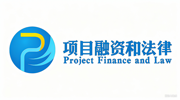US Expands Export Controls with Long-Awaited ‘50% Rule’ — Here’s What To Know
The “Affiliates” rule, as BIS called it, will automatically subject any entity that is at least 50% owned by one or more parties on the Entity List or Military End-User List to those same trade restrictions. A Kharon analysis in June found that such a rule would, overnight, cover thousands of new subsidiaries, few of which are currently named on any government screening lists.
The 50% rule aims to choke the diversion of advanced tech and other dual-use goods, particularly to China, by closing a loophole that had allowed listed parties to acquire U.S. goods through unlisted subsidiaries.
“For too long, loopholes have enabled exports that undermine American national security and foreign policy interests,” Jeffrey Kessler, Undersecretary of Commerce for Industry and Security, said in a statement Monday. “Under this Administration, BIS is closing the loopholes and ensuring that export controls work as intended.”
The rule pushes U.S. exporters to screen for risks beyond just that 50% mark, too.
Here’s what to know about the Affiliates rule and its looming (and wide-reaching) impact.
The details: The interim final rule allows exporters a 60-day grace period from restrictions, in the form of a Temporary General License, after the date of its publication in the Federal Register. That’s scheduled for Tuesday.
The rule follows the same blueprint as the longstanding 50% rule from Treasury’s Office of Foreign Assets Control, which means:
- direct and indirect ownership by listed parties both count toward the 50% threshold.
- that threshold applies in the aggregate. If multiple parents of a given entity are on the Entity List or Military End-User (MEU) List, their stakes add up.
The Affiliates rule will only apply where a parent company is specifically named on the Entity List or MEU List, BIS said. But the rule notes that subsidiaries of companies operating out of a listed high-risk address likewise pose diversion risks and demand heightened scrutiny.
Further red flags: It’s not just about crossing that 50% mark, BIS said. The interim rule also warns of risks tied to “significant minority ownership” by, or leadership ties to, foreign parties on the Entity List, MEU List or Specially Designated Nationals (SDN) List.
- Such ties “present a Red Flag of potential diversion risk to the listed entity,” BIS said. “In this type of situation, additional due diligence is necessary, especially given the opaque ownership structures and limited access to accurate ownership data in certain jurisdictions.”
The interim rule introduces Red Flag 29, which establishes that if an exporter has “knowledge” that a foreign entity is owned in part by listed parties, they must determine the ownership percentage. Where ownership cannot be verified, exporters “have an affirmative duty” to secure a BIS license before moving forward a transaction.
WHAT WE FOUND:
According to Kharon’s analysis, Russia and China account for the majority of 50%-owned subsidiaries tied to Entity Listed entities. But hundreds more subsidiaries that Kharon research identified are located in major trade and finance hubs—including the EU, the U.K., Singapore, Switzerland, Japan, Canada, Australia and India.
Their presence in these jurisdictions means that, under a 50% rule, exporters cannot assume that counterparties in traditionally low-risk markets are outside the scope of BIS licensing requirements.
- There are now more than 3,400 parties on the Entity List in all.
The bottom line: With the arrival of the 50% rule, the U.S. government’s Consolidated Screening List “will no longer comprise an exhaustive listing of foreign entities subject to Entity List license requirements,” BIS emphasized Monday.
Applying the Affiliates rule will require more time and screening resources than the previous frameworks did.
- U.S. exporters could face immediate restrictions or licensing obligations for newly covered subsidiaries, forcing updates to ownership screening and escalation protocols.
- Banks, insurers and freight forwarders, even outside the U.S., could also be exposed if they facilitate transactions involving these entities, especially where U.S.-origin goods or technology are involved.






